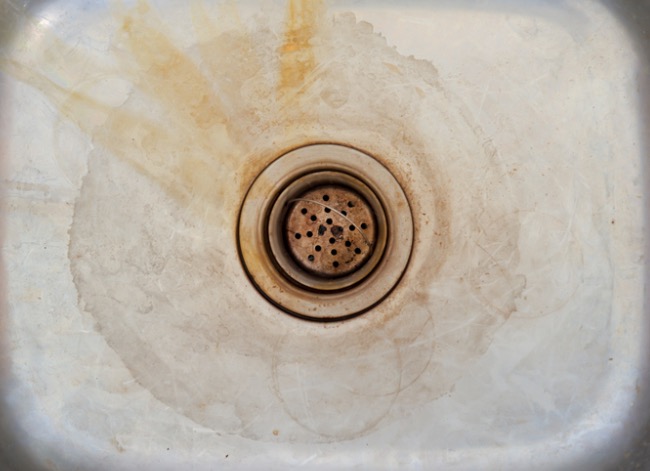

We may earn revenue from the products available on this page and participate in affiliate programs. Learn More ›
At its best, a kitchen furnished with shiny stainless steel appliances and surfaces is the picture of a pristine, professional atmosphere. But when the thick, seemingly impenetrable metal making up your kitchen sink, counters, and pots and pans begins to rust, the expensive aesthetic looks worse than it does if it were actually damaged.
Homeowners dealing with these blemishes may ask: Isn’t stainless steel supposed to be, well, stainless? Though its name is somewhat misleading, any appliance made up of the chromium-based metal can easily corrode if not cared for properly. Luckily, the blemishes are easily banished.
If you have accidentally left utensils or frying pans soaking in the kitchen sink longer than you care to admit, don’t throw in the towel on removing unsightly surface stains just yet. In fact, the solutions—yes, there are a few—are so simple that they’re probably staring you right in the face if you happen to be in the kitchen.
Read on for how to remove rust from stainless steel all throughout the kitchen and home.
METHOD 1: Use Baking Soda to Rub Out Rust
SUPPLIES
How to Remove Small Rust Spots on Stainless Steel
STEP 1: Mix a baking soda paste.
When removing only a few unsightly spots from the side of a pan or the front of your dishwasher, mix a paste of 1 tablespoon of baking soda and 2 cups of water. (For larger rust spots, skip ahead to the next set of steps.)
Baking soda is a very mild abrasive, so you can rest easy knowing that you’re conquering corrosion in a completely chemical-free way that will clean rust off stainless steel without scratching it.
STEP 2: Rub the paste into the grain of the stainless steel.
Rub the paste onto your stainless steel surface in the direction of the grain using a soft, clean cloth.
STEP 3: Rinse and wipe.
Finally, rinse and gently wipe the affected area with a damp paper towel.
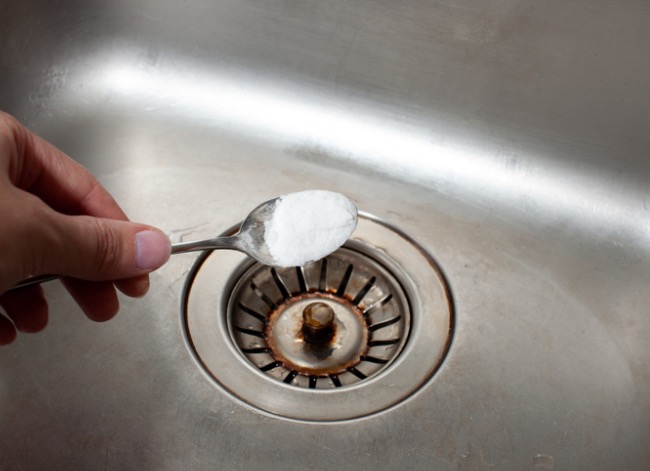
How to Get Rust off a Stainless Steel Sink or Any Large Area
STEP 1: Rinse and coat with baking soda.
Rinse the larger surface area thoroughly—be it the basin of your sink or a section of your stainless steel counters—to remove any debris and dampen the surface. Immediately after, sprinkle a layer of baking soda over the surface, making sure to coat the entire rusted region.
STEP 2: Let it sit.
Let the layer of baking soda sit for between 30 minutes and an hour.
STEP 3: Scrub rust away.
Roll up those sleeves and start scrubbing! You can scrub with a soft bristle brush, or—if you’re fresh out of cleaning brushes—use an old toothbrush that you may have saved for these sorts of cleaning purposes.
STEP 4: Rinse and dry the surface.
Rinse and carefully dry the sink or other stainless steel surface with a paper towel.
METHOD 2: Remove Rust with a Cleaner That Contains Oxalic Acid
If you’ve ever left cast-iron pots in the sink while wet, it is likely you’ve woken up to the menacing sight of rust marring a once perfectly varnished stainless steel sink. This is a forgivable gaffe indeed. But how do you treat it? You may wish to bump up your cleaning ammo by employing a cleaner containing oxalic acid such as Bar Keepers Friend or a powdered form of oxalic acid that can be mixed with water.
It’s true that not all stainless steel behaves the same way. So when a baking soda bath does not do the job to your satisfaction, oxalic acid-based cleaners offer a very effective alternative method for dissolving rust and cleaning stains.
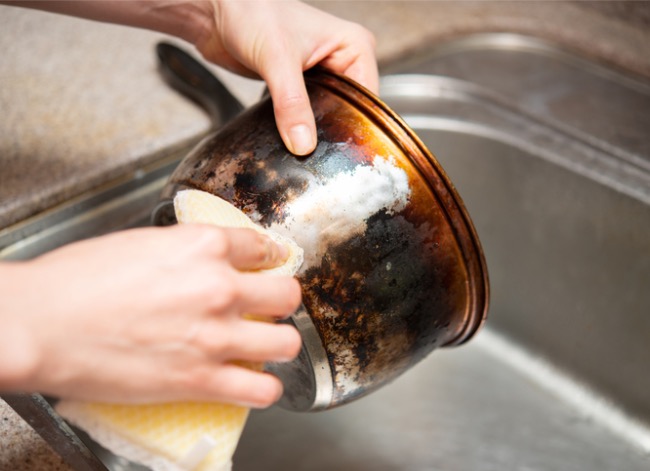
SUPPLIES
– Cleaner that contains oxalic acid, such as Bar Keepers Friend
STEP 1: Choose and apply an oxalic acid rust remover.
Apply a generous amount of cleaner containing oxalic acid onto the affected area, following the package’s instructions.
Appliance manufacturer General Electric recommends Bar Keepers Friend Soft Cleanser (a liquid cleanser free of grit), which you also can pick up at your nearest home improvement store.
Kleen King Stainless Steel and Copper Cleaner is another highly effective, rust-busting cleaner containing this key ingredient; you can find it at your local grocery store.
Avoid using any caustic cleaners that contain chlorides, as the abrasive nature of these products will only further damage the steel’s chromium film (the protective layer).
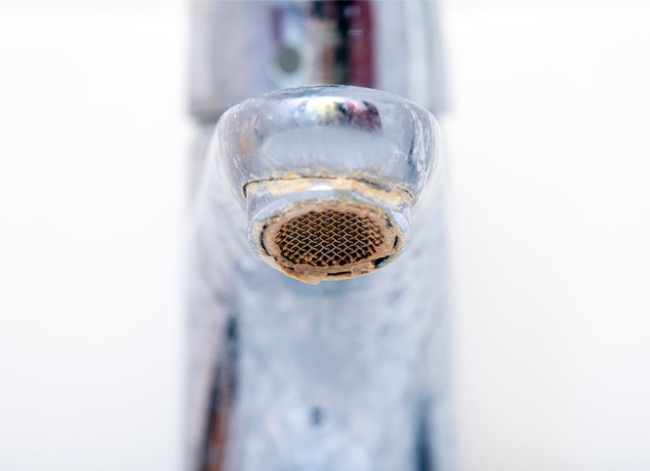
STEP 2: Rub into the grain of the stainless steel.
Once set, rub the cleaner in the direction of the metal grain lines using a soft, slightly damp sponge. Again, this requires a little bit of elbow grease but is well worth it for the sparkling finish that awaits you.
STEP 3: Rinse and dry.
Finally, rinse clean with fresh water and gently towel dry. If the stain persists, rinse the cleaner using warm water and repeat the process. Don’t leave the cleanser on for more than about a minute; increase elbow grease instead to cut through the remaining stain.
The Best (and Worst) Practices for Removing Rust From Stainless Steel
Removing rust from metal requires some scrubbing. However you choose to remove rust from stainless steel, stay far away from steel wool, steel brushes, or any cleaner that contains fluorine, chlorine, bromine, or iodine (to name but a few elements in the chloride family). Remember, chlorides are so abrasive that they’ll mar the “stainless” surface, making it susceptible to corrosion. In addition, rust removers meant for other metals or harsh cleaners and scrubbing pads like steel wool can cause damaging scratches—or worse, leave a pesky remainder of particles that can lead to yet another unpleasant rust encounter.
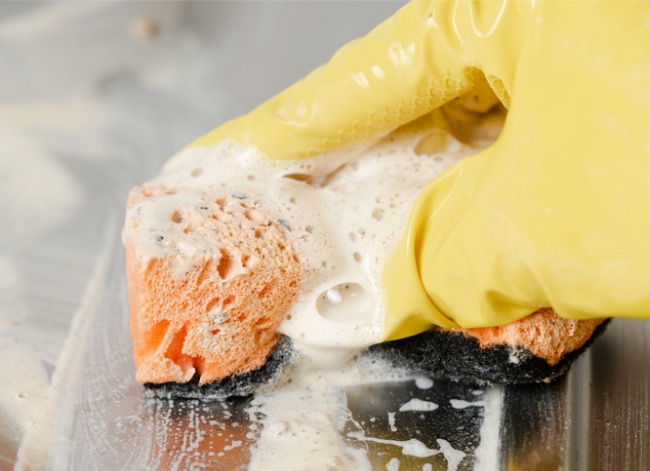
Of course, to avoid rust in the future, it’s best to minimize moisture around any stainless steel appliance. Refrigerators are particularly vulnerable if you live in coastal areas with salt-laden air, or if you happen to share the kitchen with plenty of small, impatient fingers that tend to spill liquids into the nooks and crannies of your fridge! If you spot a splash or spill, don’t tell yourself you’ll get to it later—grab a mop or an absorbent paper towel and get to work. Your gleaming stainless steel-enhanced kitchen will thank you later.
For everyday cleaning and upkeep—and to maintain that glowing luster throughout your kitchen—wipe away smudges and fingerprints regularly with warm water mixed with a mild soap or dish detergent. Then give these stainless steel surfaces a quick rinse with a cloth dampened with fresh water, and don’t skimp on the drying.
Remove standing water or leftover droplets with another clean cloth, and you can eliminate moisture before it starts the problematic cycle all over.
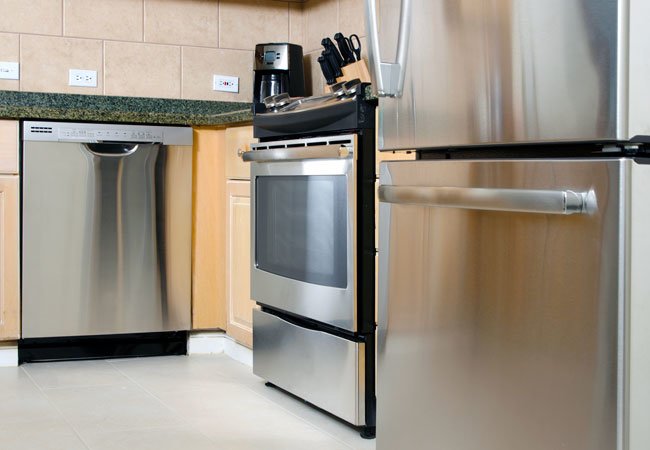
Final Thoughts
Prevention is the best way to keep stainless steel surfaces rust-free. Likewise, regular maintenance can keep these surfaces in good shape, so a good understanding of how to clean stainless steel is helpful. When rust appears, start with staples like baking soda, vinegar, and a soft cloth. Or grab your stainless steel cleaner and rust remover (with oxalic acid for best results), a soft cloth, and ready your elbow.
When the rust comes off, be sure to rinse the surface with warm water and dry it. You might have to repeat the process if some rust remains. When stripping rust from stainless steel, be sure to use the right cleaners and cloths or scrubbers. Certain chemicals and hard materials (like steel wool) can damage stainless steel. The first step is to check the manufacturer’s recommendations for how to remove rust from stainless steel appliances.
FAQs About Removing Rust from Stainless Steel
There are plenty of household products and some easy-to-find specialty cleaners that will remove rust from stainless steel. Below are frequently asked questions about using household items, along with our answers.
Q. Does vinegar remove rust from stainless steel?
You can use vinegar to remove light spots of rust on some stainless steel finishes, and it is a handy starting point, with a caveat: Some stainless steel has an oleophobic, or oil-repellant, coating to resist fingerprints. Do not use vinegar on stainless steel with this finish; the vinegar can strip away the coating.
Also, mix vinegar with baking soda for more effect. Just know that you probably can’t get all the rust off with vinegar, even on stainless surfaces without this coating.
Q. Does toothpaste remove rust?
Toothpaste is a handy all-around cleaning solution and might remove some small rust spots, like on stainless steel cutlery, if mixed with baking soda. However, it is not as effective as a commercial cleanser, especially on larger surfaces like stainless steel sinks.
Q. Can lemon remove rust?
Lemon also can dissolve some rust on stainless steel, especially when poured on top of sprinkled coarse salt or when mixed with vinegar. Lime has similar acidic qualities. Let it sit for an hour or two before rubbing the residue with the lemon rind, then rinsing and drying. However, know that lemon juice that sits too long on stainless steel can damage the surface.
Q. Does bleach remove rust?
Avoid using bleach on stainless steel. The strong solution can stain and damage the surface. Bleach compromises the outer layer of stainless steel, actually making it more susceptible to rusting or staining.
Q. How do you remove rust without scrubbing?
Scrubbing with abrasive brushes or steel wool can scratch stainless steel, actually making it more susceptible to future rust. The best cure is an ounce of prevention—keeping the surface free of standing water and stains and cleaning it with the proper gentle cleansers and cloths or brushes.
You can try soaking small items like cutlery in a vinegar or rust-removing solution and rinsing. Sinks and other surfaces likely need a little elbow grease to remove rust spots, however, and scrubbing speeds up the rust-removal process.
